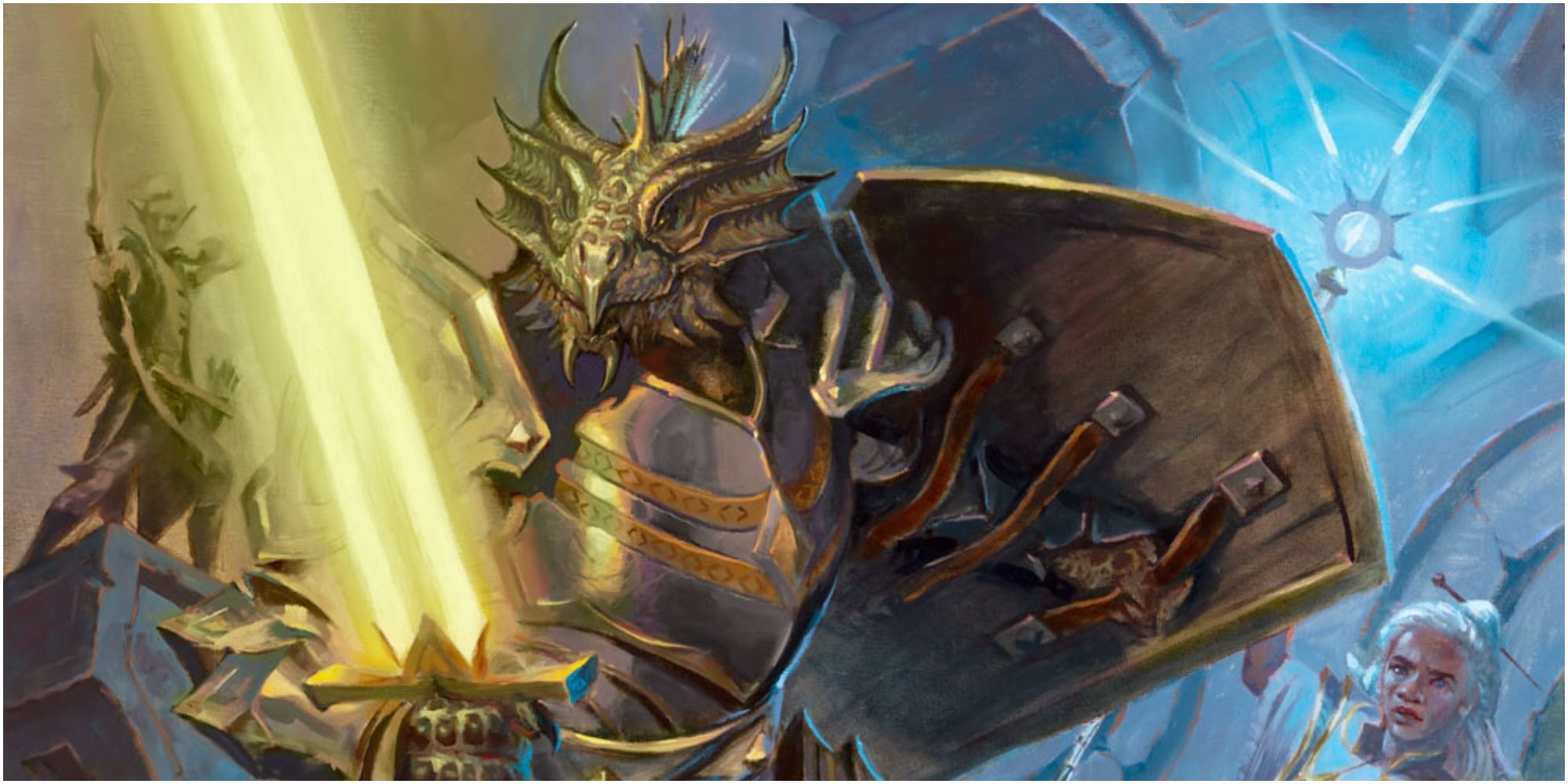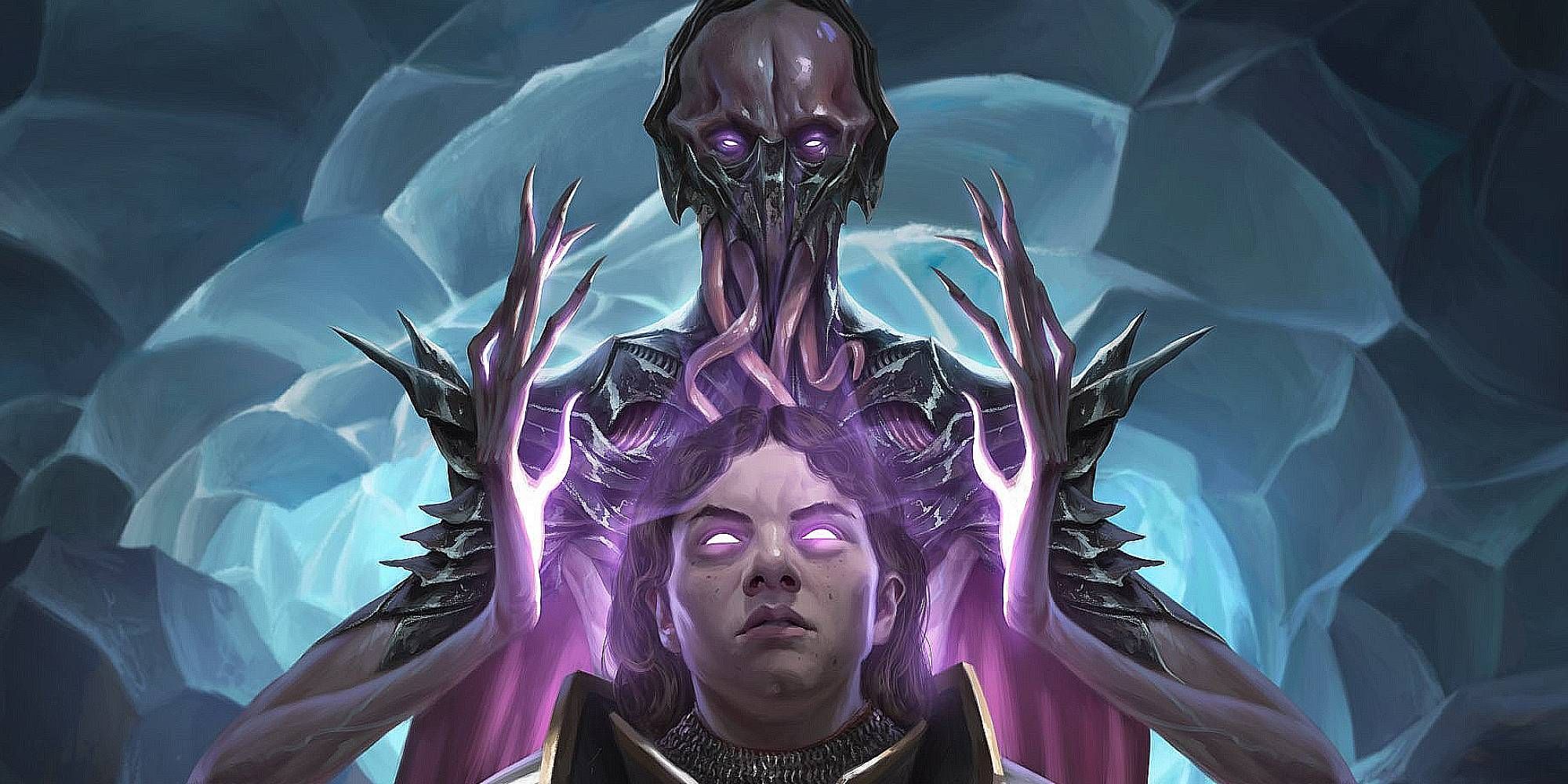Highlights
- Give your players a powerful cursed item to add excitement and challenge to your Dungeons & Dragons campaign.
- Make the cursed item appealing by offering benefits that align with your players' character traits and playstyles.
- Create a balance between the good and bad aspects of the item, ensuring that the consequences are significant enough to make the item a true curse.
It's time to give your beloved players a beautiful item for them to treasure. It's one of the best things a DM can do during their Dungeons & Dragons campaign, after all. Especially when the item is magical but not a good kind of magic. Instead, you can give your players a powerful cursed item.
All that said, maybe your players are already used to the cursed items the game offers, or you don't find the options interesting. Instead, you want to catch your players off-guard with a homebrew item. How far is too far with a curse, though? In the end, it's still a game.
5 What Is Your Ultimate Storytelling Goal?
Does your item fill an objective for you? For instance, is it plot relevant, or is it just you messing around with the players? Cursed items can fill many roles depending on how far you want. You can make a serious, complex item with multiple ups and downs, or you can just make a silly curse that will make the group laugh and maybe ditch the item shortly after.
A sentient weapon, for example, can be a serious curse by trying to take over its host or a silly curse by being straight-up annoying and never shutting up. Analyze how far you wish to go with the item, then start conceptualizing it.
4 Make The Benefits Of The Cursed Item Really Appealing
Cursed items can't be all bad. Well, they could, but then your player will immediately get rid of it unless you forcefully bind the player to it. And even then, your player will have a terrible time stuck to an item that only harms them. There has to be an upside for your item.
That way, your item becomes tempting. See what characters are in the group and what would tempt them. The paladin would be tempted by a weapon that does critical hits with 19 or lower for their Smite. The Rogue would be tempted with a weapon that attacks without revealing them. Don't simply get the characters invested in the item, but get the players addicted to it. Then, you can start planning the consequences of taking these shortcuts.
3 Balance The Good With The Bad
Now that you thought about the benefits of the item, what is the cost of having it? A common curse is the aforementioned sentient weapon that tries to take over the host, for instance. Maybe the weapon wants to be a powerful warrior, and if the player keeps being nice and sparing others, the weapon will try to murder people without the player's consent. Or you can give technical penalties, such as a weapon that grants extra attacks or even actions, at the cost of causing exhaustion.
If the consequence doesn't reach the item's perks, you're just making something useful. Take, for instance, the Shield of Missile Attraction, which gives you resistance to ranged attacks, but forces all range attacks from 10ft away to hit you. If you give this shield to a tank, it's just awesome. They will likely enjoy the fact they can redirect attacks from their allies with this and won't mind the extra damage, especially with resistance to it. Heavy bonuses should have heavy consequences.
2 Keep The Mystery
All that said, you shouldn't let your party know that the item they've found is cursed right away. There can be hints through your worldbuilding, but if the players are aware of the curse and, more importantly, what it does before even touching the item, they'll likely not take it. Their first glance needs to be, "Look! A cool magic item!" and only be aware of the curse as they use it and learn about it.
After taking advantage of its damage resistances, they can learn about all the damage vulnerabilities that come with it when they take a hit and realize you doubled the damage. Oh, and don't worry about things such as Identify. Rules as written, they do not detect curses, though they might detect some magical effects. For example, if the cursed item is a +2 sword, Identify will get that part, making your players more interested in the item.
1 Know Which Players Can Use The Cursed Item
When creating an item, cursed or not, you have to keep in mind who can use said item. If you have a party of spellcasters only, a cursed plate armor will be useless, no matter how great it is, simply because none of the players have proficiency on this type of equipment.
Not only do you need to see that, but if you want to have a player tempted by your cursed item, consider something that enhances their play style, then put a twist on it. For example, you can give a powerful great sword to your Barbarian player who's already making a build with two-handed weapons, but they can't spend a day without killing someone without having consequences. You're making an item that fits the player's build and will interest them but also giving them a bad deal, as a cursed item should do.
Bonus: Technical Examples
Small buffs demand small hindrances only. If your item is just a +1 or +2 weapon, it should come only with an annoying curse, as it is not that difficult to find regular weapons with these types of bonuses on later levels.
You can give your item a deadlier power, such as taking health away for extra damage or immediately recovering spell slots. A lot more useful, but at the cost of health. You can even make it so that the item does not let the player recover health until they take a long rest, but then the extra damage needs to be good. Remember, if the problem con far outweighs the pro, the player will ditch it.
Alternatively, you can make an item with its own will, and getting rid of it is more challenging due to mind control shenanigans. A weapon that can control the user — with a chance to escape with a Wisdom saving throw, for instance — is very punishable. And you can take your time letting the player get attached to the item before you make your cursed move. This is also an effective consequence if you want the item to have a roleplaying part in the story rather than just mechanical changes to the game.







